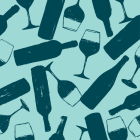Rare Penfolds vertical expected to smash $350,000 record
Australian auctioneer Langton’s says it’s expecting to set a new record at its upcoming Penfolds auction. A total of 1,800 bottles are on offer at the sale – which runs until Sunday 15 December – including a rare vertical of Penfolds Grange dating from 1951 to 2014, which is expected to break the previous record of AU$350,000 (£180.780).
The existing record was set in 2018 for a vertical of Penfolds Grange dating from its first vintage, the 1951, to 2013.
Two bottles of the 1951 will also go under the hammer, expected to sell for AU$70,000 (£36,000) each. The current record for a single bottle of 1951 is AU$80,386 (£45,758), also achieved by Langton’s at the end of last year.
Commenting on the sale, Tamara Grischy, head of auctions at Langton’s, said: “In 1995, I remember selling a set for $30,000. As the Penfolds brand has continued to evolve and become one of the biggest wine brands in the world, the demand keeps increasing.
“It’s very rare to see one bottle, let alone two, of the first Grange… This is a historic vintage, and represents the beginning of modern Australian wine. It is believed there are less than 20 bottles in circulation.”
Demand for fine wine investment to increase in next 12 months
Global demand for fine wine investment is likely to increase in the coming year, according to new research conducted here at Cult Wines.
Our study indicates that an overwhelming majority (91%) of wealth managers and financial advisers believe demand will increase or remain stable, with 41% anticipating growth. Furthermore, some two-thirds (61%) of advisers believe that the European Central Bank’s decision to renew quantitative easing will further push up the value of physical assets such as fine wine, art and classic cars.
Much of this growth can be attributed to an increased understanding of fine wine as an alternative asset among investors, with more than half (57%) believe awareness of fine wine’s role in investment portfolios will rise over the next five years.
Tom Gearing, managing director of Cult Wines, said: “Alternatives allocation is becoming more appealing in the wealth management industry. Today’s research clearly shows that advisers are confident that more investors could turn to investing in fine wine over the coming months, which cannot only prove to be a prudent investment but also much less volatile than other major alternative investments in addition to equities.”
“With uncertainty around Brexit, currency fluctuations and trade war concerns, fine wine could provide resilience in these tough market conditions, combined with the opportunity for capital appreciation.”
Champagne continues to deliver healthy returns
Champagne investment continues to outperform gold and deliver regular, positive returns. Our latest Champagne Investment Report indicates that the Liv-Ex Champagne 50 index has provided total returns of 47% between 2014-2019 – compared to 25% for gold – with 7.8% and 4.4% respectively in 2018 and 2019.
Salon has led the way, delivering an impressive gain of 222% over the last 10 years, while Taittinger delivered returns of 191.4%, and Bollinger La Grande Annee 131%.
Tom Gearing, managing director of Cult Wines, said: “Our optimism for the Champagne region is driven by its long-term stability and higher risk-adjusted returns when compared with other regions of the market. The current fine wine market environment calls for a more balanced portfolio, and the merits of diversification found in Champagne support our view for a long-term 10% allocation to Champagne.
“As we enter 2020, we expect to see a continuation of the increasing appetite for Champagne. The celebratory nature of Champagne, combined with strong restaurant presence and better production capacity, makes it a unique offering in the fine wine market.”
US collectors turn to auctions to avoid Trump tariffs
Fine wine buyers in the US have found a workaround to Donald’s Trump restrictive trade wars with France. Instead of shipping bottles from Europe, they’ve turned their attention to auctions of bottles already in the US, prompting what some fear could be a ‘run on’ stock within the country.
Speaking to the Financial Times, Jamie Ritchie, chairman of Sotheby’s Wine, said: “We’re going to see retailers and restaurants wanting to secure supply of French wine at pre-tariff prices, and they’re going to look at every avenue.”
Some have also predicted that the situation could present increased opportunities for ‘flippers’ –individuals hoping to turn a quick profit on sought-after bottles. But at the FT notes, most established and serious wine collectors tend to hold out for the long term, and are keen to avoid the considerable fees associated with auctions where possible.
Appetite for organic wine set to double in a decade
Organic wine consumption around the world is set to hit a billion bottles by 2023, according to a new report from organic wine fair Millesime Bio. This is compared to just 441 million bottles in 2013.
Meanwhile, organic wine will account for 3.5% of global wine consumption in 2023, up from 2.6% in 2018 and just 1.5% in 2013.
France is predicted to be the biggest market for organic wine, accounting for some 20% of all consumption, followed by Germany with 17.6%. The UK will consume around 9.3% of the total, equating to some 91 million bottles.
Nicolas Richarme, president of SudVinBio, which conducted the study, said: “This new research demonstrates how more and more consumers around the world are choosing organic wines as they reject the use of pesticides and other unnatural products that damage the environment and can enter the food chain.
“This trend will only increase as large and small vignerons switch to more sustainable winemaking, and retailers stock a larger range of organic wines to meet rising consumer demand.”






